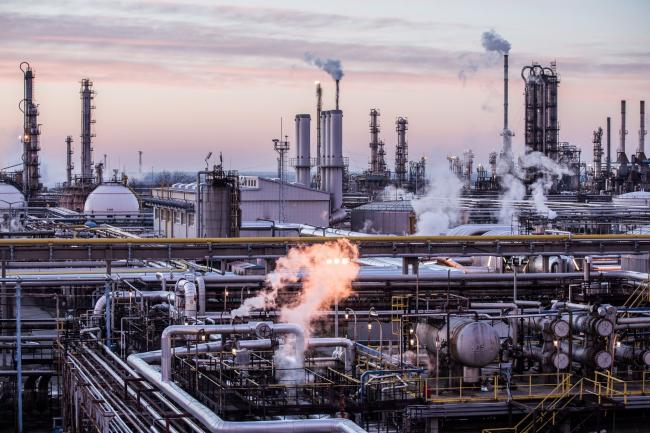(Bloomberg) -- Oil had its worst reaction to an OPEC meeting in more than four years, with prices sliding just after the cartel agreed to prolong production curbs as fears about the global economy mount.
Futures closed down 4.8% in New York, the steepest decline since May 31 and the biggest drop after an OPEC gathering since November 2014. Bank of England Governor Mark Carney warned of dangers from rising protectionism around the globe, citing a “widespread slowdown” that may require a major policy response. That added to worries following weak manufacturing reports from the U.S., China and Europe.
The anxieties blotted out optimism despite Tuesday’s agreement by major oil exporters to extend production cuts for nine months. Divisions remained over Saudi Arabia’s push to target even deeper reductions, with Russia expressing doubts at the end of a summit in Vienna.
“There are concerns that demand might slow to where it overpowers supply,” Bart Melek, head of commodity strategy at Toronto’s TD Securities, said in an interview. The “gloomy” data, especially from China, “is very much part and parcel of what we’re seeing.”
In another worrying sign, backwardation for Brent, a pattern in which the front-month contract is valued more than future months because of strong demand, was halved between Monday and Tuesday for near-term prices.
West Texas Intermediate crude for August delivery slipped $2.84 to settle at $56.25 a barrel on the New York Mercantile Exchange. The slide accelerated as the contract crashed through several key technical trading levels, with WTI crossing below its 50-, 100- and 200-day moving averages.
Brent for September settlement declined $2.66 to $62.40 a barrel on the ICE (NYSE:ICE) Futures Europe Exchange.
The drop in crude prices on Tuesday was an “anomaly,” OPEC Secretary-General Mohammad Barkindo told reporters in Vienna.
Saudi Arabia said it would keep its output below 10 million barrels a day, even lower than required under the so-called OPEC+ deal. Saudi Energy Minister Khalid Al-Falih said he was “enthusiastic“ about the outlook for oil demand.
Yet Russia, the other de facto leader of the group, questioned a Saudi proposal to use the average of 2010 to 2014 global oil inventories to set future production targets. That move, a change to current policy, would require deeper cuts but achieve the higher prices the Saudis need to balance their budget.
The OPEC pact leaves the door open for U.S. shale producers to grab more market share, as the group will have to cut deeper to achieve inventory targets, according to Goldman Sachs Group Inc (NYSE:GS). The decision creates a clearer downside risk to the bank’s forecast for Brent to average $60 a barrel next year, even though it could result in some shorter-term price spikes.
The structure of the Brent crude market suggests investors may be losing faith that the OPEC+ extension will be enough to stave off an oversupply. The premium of front-month futures over the next month reached as little as 17 cents on Tuesday, compared with 43 cents early on Monday. A shrinking premium, or backwardation, indicates a weakening near-term market.
